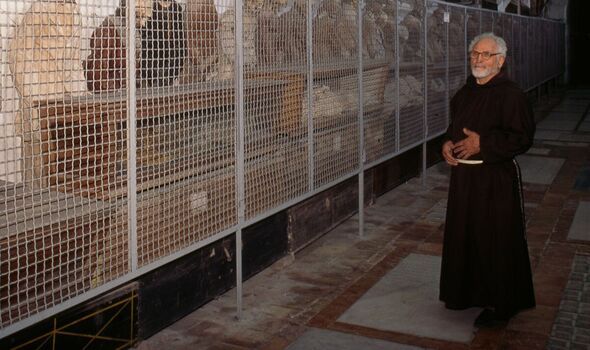

is renowned for its stunning beaches, charming villages and towns, as well as an abundance of ancient ruins and archeological sites.
The Mediterranean island attracted over 16 million visitors last year, evidence of its huge popularity.
It is also home to an astonishing burial site that is fast becoming a haven for .
The Capuchin Catacombs in houses a macabre collection of 1,100 mummies dating back hundreds of years.
The mummies are dressed in robes and pinned to the walls, sitting on benches or lying in open coffins.
Some of them still have teeth, hair and skin, while others are just crumbling bones.
The catacombs were initially an extension of a cemetery built by the Capuchin friars, who established their order in in 1539.
When space for the deceased ran out in the old cemetery, the monks excavated a large area behind the altar of St Anne at the church of Santa Maria della Pace.
On completion, they decided to move the remains of the 45 deceased friars to the new burial site.

To their astonishment, they found the bodies of the 43 friars naturally mummified and magnificently preserved.
The monks believed that this was an act of God and decided to display the bodies of their brothers as relics.
From the 17th to the 19th century, thousands of people had themselves buried in the catacombs.
As the cost of the entire mummification process was expensive, only the wealthy and rich elite could afford the ritual.
Most of the corpses on display are mostly Royalty, government generals, wealthy residents and celebrities.
Most of the mummies in the Capuchin Catacombs are the result of natural preservation.
This is based on dehydration. Once dehydrated, the decay of human tissue by bacteria and putrefactive agents is greatly reduced.
Later, the monks devised their own special methods to mummify the bodies of the deceased.
The catacombs are open to visitors - who are asked not to touch or take photographs.